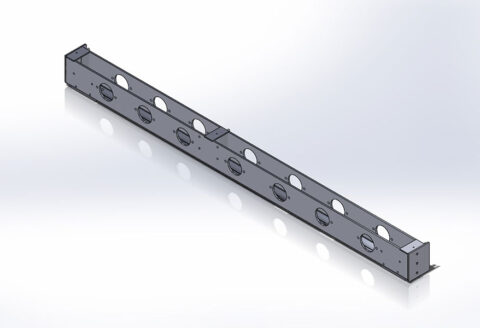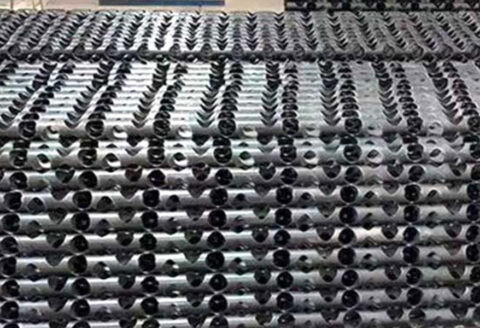In recent years, with the rapid development of science and technology and industrial economy, the demand for aluminum alloy welded structural parts has increased, so the research on aluminum alloy weldability has become more and more in-depth. The wide application of aluminum alloy has promoted the development of aluminum alloy welding technology. At the same time, the development of laser welding technology has expanded the application fields of aluminum alloys, so aluminum alloy welding technology has become one of the research hotspots. The prerequisite for the improvement of aluminum alloy welding process is to be familiar with the material properties of aluminum alloy.
1. Physical and chemical properties of aluminum alloy
Aluminum alloy material has high reflectivity and high thermal conductivity. In terms of microelectronic structure, aluminum alloy has a large number of high-density free electrons. When the laser acts on these electrons, it will produce strong vibrations and secondary electromagnetic waves, producing strong reflected waves and weak transmitted waves. Therefore, the surface of the aluminum alloy has a strong reflectivity to the laser, which affects its impact on the laser, and at the same time, due to the strong Brownian motion of electrons, the heat conduction of the aluminum alloy will be significantly improved.
A lot of research has been done on laser welding of aluminum alloy materials in China. The results also proved that the surface pretreatment of aluminum alloy materials, such as sandblasting, sandpaper treatment, surface chemical corrosion, surface electroplating, carbon black addition and oxidation, can reduce beam reflection and effectively improve the laser absorption of aluminum alloy workpieces, from the design of welding structures. Considering the form of artificial holes or combined light collectors, v-wave opening welding or seam welding (splicing gap is equivalent to artificial openings) can increase the laser absorption of aluminum alloy and obtain greater penetration. Reasonable design of the welding gap can also increase the laser energy absorption on the aluminum alloy surface.
2. The effect of pinhole effect and plasma on aluminum alloy laser welding
In the process of aluminum alloy laser welding, the appearance of small holes on the surface can greatly increase the material’s absorption rate of the laser, and the welding can obtain more energy. The aluminum, magnesium, zinc, and lithium in aluminum alloys have the characteristics of low boiling point, easy evaporation, and high vapor pressure. Although this is conducive to the formation of small holes, the cooling effect of the plasma (shielding and absorbing energy by the plasma) reduces the energy input of the laser damage. The base metal plasma itself “overheats”, but it prevents the continued existence of the keyhole , It is easy to produce welding defects such as pores, thereby affecting the welding formation and the mechanical properties of the joint. Therefore, the sensitivity and stability of the small holes have become the key to ensuring the quality of laser cutting china.
Due to the high reflectivity and high thermal conductivity of aluminum alloys, a higher laser energy density is required to induce the formation of small holes. The energy density threshold is basically controlled by the alloy composition. By controlling the process parameters, selecting and determining the laser power, and ensuring proper heat input, a stable welding process can be obtained. In addition, the energy density threshold is also affected to a certain extent by the type of shielding gas. In aluminum alloy laser welding, N2 gas is easy to produce small holes, but he gas does not. This is due to the exothermic reaction between N2 and Al to form an Al-n-o ternary compound, which improves the laser absorptivity.
3. Aluminum alloy welding pores
There are many types of aluminum alloys, and their pores are also different, but they are usually different from the following types of pores.
1) The pores created by the protective gas. In the process of high-energy laser welding aluminum alloy, because the metal in front of the small hole at the bottom of the molten pool evaporates strongly, the shielding gas is sucked into the molten pool to form bubbles. When the bubbles do not escape, they remain in the solid aluminum alloy and become pores.
The hole is formed by the collapse of a small hole. In the laser welding process, when the surface tension is greater than the vapor pressure, the small hole will be unstable and collapse, and the metal will not have time to fill the small hole. There are also many practical measures to reduce or avoid pore defects in laser welding of aluminum alloys, such as adjusting the laser power waveform, reducing unstable small hole collapse, changing the beam concentration and oblique irradiation, and applying electromagnetic fields in the vacuum welding process and welding effect. In recent years, the use of wire-filled or pre-solidified alloy powder, composite heat source and dual-focus technology to reduce porosity has achieved good results.
3) Hydrogen pores. When aluminum alloy is melted in the presence of hydrogen, its internal hydrogen content can reach more than 0.69ml/100g. But after solidification, the hydrogen dissolving capacity of the alloy in the equilibrium state is only 0.036ml/100g, a difference of nearly 20 times. Therefore, in the process of transition from liquid aluminum to solid state, excess hydrogen in the liquid aluminum must be precipitated. If the precipitated hydrogen cannot float and escape smoothly, it will gather into bubbles and stay in the solid aluminum alloy in the form of pores.
4. The crack problem of aluminum alloy
Existing problems: Aluminum alloy is a typical eutectic alloy, and it is prone to hot cracks when laser welding is rapidly solidified. The formation of low melting point Al Si or Mg Si eutectic at the columnar crystal boundary is the cause of cracks.
Solution: Laser welding can be carried out by filling welding wire or preset alloy powder. By adjusting the laser waveform and controlling the heat input, crystal cracks can be reduced.
In a word, laser welding of aluminum alloy needs to understand the chemical and physical properties of the material itself, combined with relevant technical points, to avoid negative effects on the workpiece material during welding. Aluminum alloy welding technology is one of the key technologies to expand the application of aluminum alloy in the industrial field. Laser welding, laser arc hybrid welding, dual-beam laser welding and other technologies are all aluminum alloy welding processes that have been developed in recent years. With the development of technology, the technical difficulties of aluminum alloy welding in the future will be broken through, and the application of aluminum alloy will become more and more extensive.


